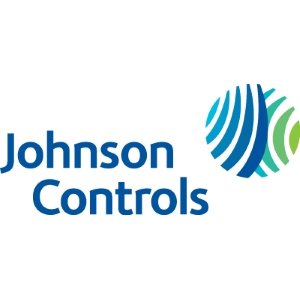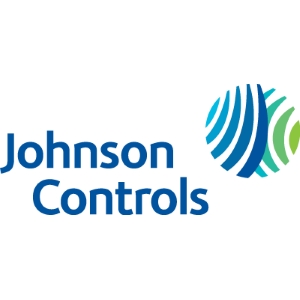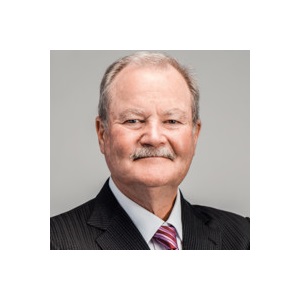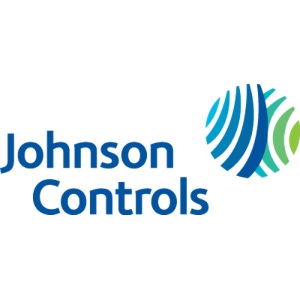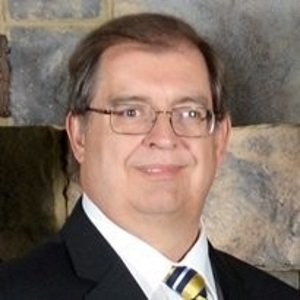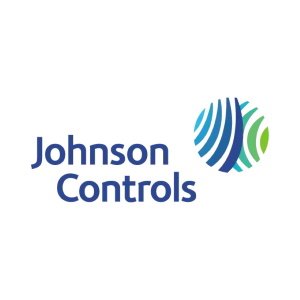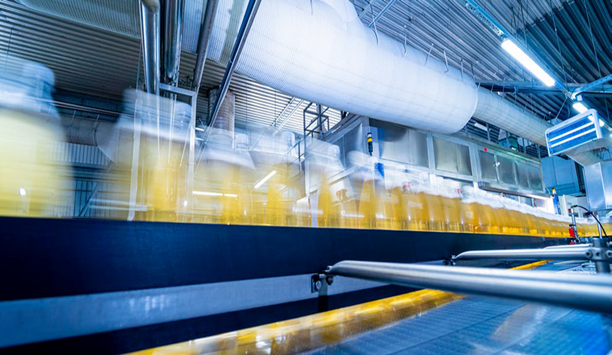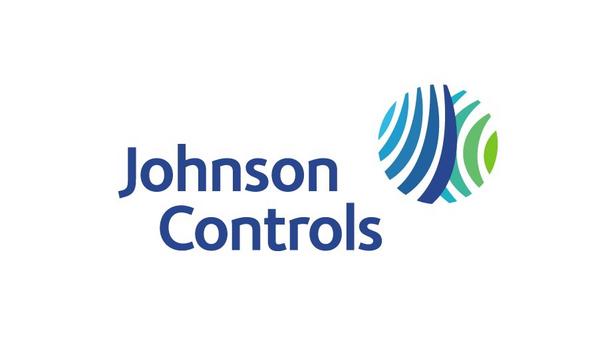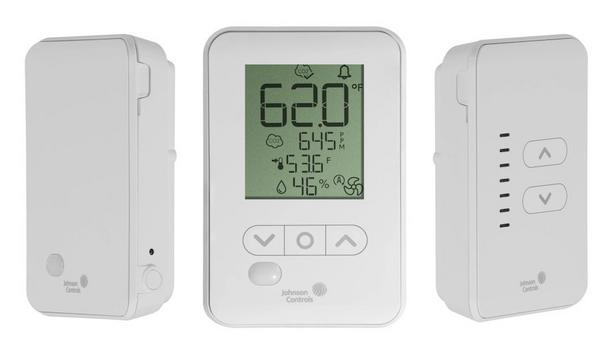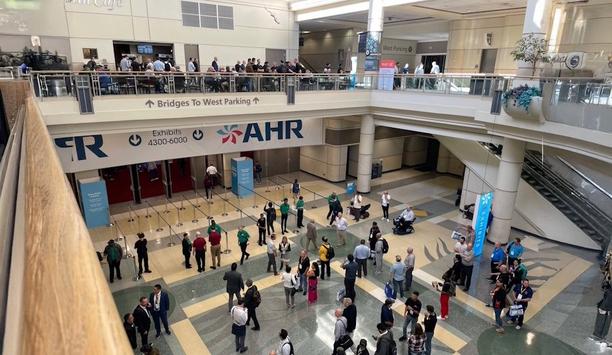Johnson Controls - Experts & Thought Leaders
Latest Johnson Controls news & announcements
Johnson Controls, the global pioneer for smart, healthy, safe and sustainable buildings, is celebrating 140 years of achievements and industry-firsts. Since its founding in 1885, Johnson Controls has continuously improved the built environment, delivering the first automatic sprinkler and then the first room thermostat shortly thereafter. Fire protection and smart security portfolio Johnson Controls is serving customers throughout the building lifecycle with one of the largest portfolios Johnson Controls is serving customers throughout the building lifecycle with one of the largest portfolios of heating, ventilation and air conditioning equipment and controls in the world, coupled with a world-class fire protection and smart security portfolio. The company is laser-focused on enhancing and protecting essential buildings ranging from data centers to advanced manufacturing, education to hospitals to pharmaceutical labs, creating environments that improve society and help customers run mission-critical operations. Design of equipment to installation Johnson Controls continues to innovate with the ever-growing portfolio of more than 8,000 patents and billions of dollars invested in engineering, research, and development in recent years. While portions of the business have been around longer, with its Grinnell and York brands celebrating more than 150 years in existence, the company is united in its inventive spirit and end-to-end partnership with customers. From original engineering and design of equipment to installation, service and ultimately replacement and upgrade, the company is about trust and deep commitment to customers. Innovation and continuous improvement Johnson Controls continues to innovate with the ever-growing portfolio of more than 8,000 patents “This year marks a very special milestone for Johnson Controls, our 140th anniversary. And this anniversary is a chance for us to reflect on our journey. We are humbled by and grateful for those who came before us and feel the responsibility to forge ahead, accelerate solving our customers’ problems, and find new and better ways to advance technologies to make a difference,” said Johnson Controls CEO, Joakim Weidemanis. Joakim Weidemanis adds, “It’s no doubt the secret to our longstanding success is our talented teams around the world and I thank our employees, customers and partners for their role in helping us reach this exciting milestone. As we celebrate what we’ve accomplished, we’re also excited about the future. We feel like we have just gotten started. We are ready to accelerate our technology-based innovation and continuous improvement together with our customers to keep transforming our industry for the next 140 years.” Integrating IoT and connecting equipment Looking ahead, Johnson Controls has a more simplified portfolio serving customers over the lifecycle of a building. Combined with world-class service teams reaching more than four million customers anywhere and at any time, the customers are saving money, energy, and time. The portfolio is further enabled by digital, integrating IoT and connecting equipment, harnessing award-winning AI and machine learning, and offering enhanced real-time analytics - making buildings smarter than ever before. Whether it’s protecting from extreme weather conditions, mitigating rising energy prices, or developing the latest technology, Johnson Controls is a trusted partner with global expertise and local presence to serve customers now and in the future.
Johnson Controls, the pioneer for smart, healthy, safe, and sustainable buildings, released a new commissioned study conducted by Forrester Consulting quantifying the Total Economic Impact™ and benefits of its OpenBlue platform. In the study, Forrester found that a model organization representing a composite of interviewed customers from multiple industries deploying OpenBlue, including FM:Systems solutions, could achieve up to a 155% return on investment (ROI) over three years. Smart building ecosystem solutions OpenBlue is an award-winning, AI-optimized smart building ecosystem of related solutions and favors OpenBlue is an award-winning, AI-optimized smart building ecosystem of connected solutions and services. OpenBlue allows customers to unlock the performance of their buildings and workplaces with near real-time data visibility. Leveraging enhanced AI, OpenBlue provides tailored energy-saving recommendations based on usage and weather data, helping customers reduce operating costs and move toward more autonomous buildings. OpenBlue is now integrated with FM:Systems solutions, expanding real-time data visibility, creating high-performance workplaces and bringing additional clarity and vision to strategic real estate decisions. Other key findings Other key findings for the composite organization include: Up to 10% energy savings: Enhancing overall efficiency. Up to 67% reduction in chiller maintenance: saving nearly $1.5 million over three years. 7% rental premiums: Resulting in three-year present value of $3.2 million. 8-month payback period: Based on the total costs and net benefits. Energy efficiency and reducing carbon emissions "We believe the findings speak for themselves: Our OpenBlue and FM:Systems solutions not only lower operating costs, but also optimize energy use – a win, win. By enhancing energy efficiency and reducing carbon emissions, we're helping our customers achieve their sustainability goals and also improve their bottom line," said Vijay Sankaran, Chief Digital and Information Officer at Johnson Controls. He adds, "As global companies face pressure to save time and money, our capabilities stand out in delivering both environmental and financial returns." Fire, security, and automation According to a customer interviewed for this study, "OpenBlue has saved us up to 10% on our energy costs. We did some other work to reduce these costs but, as an example, OpenBlue showed us out-of-hours lighting was costing $17,000 per floor of our buildings. Without that insight, we wouldn't have been able to take action to reduce those expenses and that energy waste." Another customer interviewed stated, "Not only is Johnson Controls supplying the critical, backbone items of facilities management, like chillers, fire, security, and automation, but by adding a management layer on top of these, they have provided consistency and solid support." Expanded AI Capabilities Johnson Controls has grown its AI abilities in its OpenBlue Enterprise Manager suite solutions In November 2024, Johnson Controls significantly expanded its AI capabilities in its OpenBlue Enterprise Manager suite of digital solutions, part of the OpenBlue digital ecosystem. The updates included OpenBlue's first customer-facing generative AI application, more autonomous building controls, and a significantly improved user experience, paving the way for additional AI enhancements this year. Features in OpenBlue The expanded features in OpenBlue provide clearer insights and better performance, including: Integrated generative AI tools that proactively recommend impactful energy savings projects. Major upgrades to the user experience with a focus on personalization, improved design, and compliance with a higher level of accessibility standards. Enhanced indoor air quality monitoring and sensor analytics to support smarter and healthier buildings. Next era of smart buildings FM:Systems also added generative AI to its FMS:Insights Analytics platform, enabling users to ask natural language questions about occupancy and utilization data across their real estate portfolios. These findings underscore Johnson Controls' 140-year legacy of innovation. The company continues to lead with more than 8,000 active patents and $3 billion invested in engineering, research & development over the past decade, driving the next era of smart, sustainable, and autonomous buildings.
Johnson Controls, the pioneer for smart, healthy, and sustainable buildings, announced the launch of the NSW8000 Series Wireless Network Sensor for Metasys building automation systems (BAS) and FX series programmable controllers. This innovative multisensor offers a seamless and cost-effective solution for real-time monitoring of temperature, relative humidity (RH), and occupancy (PIR) detection with optional CO2 sensing for improved air quality monitoring. Integration of building sensors The full integration of building sensors and controls is a key pillar in a commercial building The full integration of building sensors and controls is a key pillar in a commercial building’s digitalization, where intelligence is delivered to the BAS, leading to improved operations, costs, and efficiency. The NSW8000 provides a versatile, convenient network sensor that gives facility teams a fuller picture of what’s happening with their space and equipment. Metasys systems and FX series controllers “From facility managers to HVAC technicians to automation specialists, our customers need solutions that help them optimize operational efficiency, maximize energy savings and enhance occupant comfort,” said Kaishi Zhang, Vice President of Global Product Management, Building Automation Systems and Controls at Johnson Controls. “Paired with our Metasys systems and FX series controllers, the NSW8000 provides maximum versatility and control, empowering our customers to unlock the full potential of their buildings as strategic assets.” Advanced engineering and design features The NSW8000 boasts advanced engineering and design features that ensure future upgrades, minimize installation impact, and provide flexible, user-friendly options. Reliable Connectivity: Runs on a wireless mesh network with multiple sources of connectivity to help ensure reliability and uptime. Excellent Range: Provides up to 150 feet of coverage, offering excellent range for a battery-powered unit while providing more reliable control in structures that require wireless installations. Secure Data Transmission: Guarantees secure data transmission with AES-128-bit encryption. Future Ready: Engineered for future upgrades, allowing facility managers to access the latest features as product technology and wireless networks evolve for even greater long-term performance and value. Minimal Maintenance: Powered by two readily available lithium or alkaline AA batteries for minimal maintenance. Most NSW8000 sensors have a 10-year battery life, while CO2 sensors offer a 5-year battery life. In addition, battery-powered operation makes installation easier and less costly, since technicians do not need to pull wires or conduit. Architectural Preservation: The NSW8000 wireless construction minimizes installation impact on architectural details, decorative surfaces and other sensitive structures such as museums or historic buildings. Enhanced Display: Three display options are available to optimize flexibility, comfort, and control. Wide selection of network sensors Johnson Controls provides a wide selection of network and non-network sensors designed for efficiency and easy installation. The company’s offerings include humidity, HVAC temperature, pressure, carbon dioxide and occupancy sensors, engineered to integrate seamlessly with various systems to meet facility needs.
Insights & Opinions from thought leaders at Johnson Controls
Installing HVAC equipment is not as simple as plugging in an appliance. Installers often face many hurdles, including complex system design, space constraints, accurate sizing and load calculation, and proper ductwork installation. But what are we forgetting? We asked our Expert Panel Roundtable: What is the most overlooked factor when installing HVAC systems?
Building design and HVAC are interdependent aspects of creating a comfortable, healthy, energy-efficient, and functional indoor environment. How important is collaboration as architects and HVAC engineers seek to ensure that a building's form and function are harmonized with an efficient and effective HVAC system? We asked our Expert Panel Roundtable: How does building design impact HVAC systems – and vice versa?
The HVAC Industry gathered in Orlando for AHR Expo 2025, focusing on the latest advancements in technology. Attendees included contractors, manufacturers, engineers, system design professionals, facility managers, architects, wholesalers, and distributors. This year’s expo highlighted game-changing innovations, regulatory shifts, and emerging trends designed to enhance efficiency, sustainability, and connectivity. For HVAC professionals, these developments translate into practical solutions that improve system performance, optimize energy use, and simplify compliance with evolving industry standards. The Next Phase of Refrigerant Transition The transition to A2L refrigerants is a dominant theme at this year’s expo, with major players such as Arkema, Chemours, LG Electronics, Rheem, Daikin, and others showcasing the latest refrigerants and equipment solutions. Following the deadline of Jan. 1, 2025, the shift from R-410A to R-32 and R-454B is well underway, with 80% of manufacturers opting for R-454B. While concerns about flammability persist, experts emphasize that proper training and system design can mitigate risks. LG Electronics' full product line Some OEMs opted for R-454B as an option that is closer to a “drop-in” solution Some OEMs opted for R-454B as an option that is closer to a “drop-in” solution. Daikin was among the manufacturers to go all-in on R-32, which required a complete redesign of product components, ultimately pioneering to more efficient, cost-effective systems, according to the company. LG Electronics' full product line now uses R-32 refrigerant, and they started shipping products in December. All R-410A equipment will be gone by the end of Q1. variety of products on R-454B refrigerant Rheem announced their 100-year anniversary, and a new tagline, "Engineered for Life." They say the trend is toward side-discharge heat pumps, although the industry needs a mix of both. They had a variety of products on display that use R-454B refrigerant. Attendees at AHR Expo 2025 came away with an understanding that refrigerant regulations and selecting compatible equipment will be crucial for ensuring smooth transitions in commercial and residential applications. Intelligent Building Automation and Controls Smart HVAC technology is revolutionizing building control, with AI-driven automation Smart HVAC technology is revolutionizing building management, with AI-driven automation, IoT connectivity, and remote monitoring taking center stage. Companies like Distech Controls and Schneider Electric are introducing IP-based controllers that integrate seamlessly with existing building management systems. Belimo’s intelligent butterfly valve and Delta’s Node-RED Programming with built-in Python support, among other products, are making automation more powerful and user-friendly. Copeland’s Sensi Touch 2 smart thermostat Copeland’s Sensi Touch 2 smart thermostat and Sensi equipment interface module (EIM) can eliminate the need to pull additional wires during installation. The system is weatherproof, indoor, or outdoor, and communicates using radio frequency (RF). AHR Expo 2025 made a strong case that investing in smart controls will improve operational efficiency, reduce downtime, and enable predictive maintenance. Hydronic Systems for Data Center Cooling One major player is Bell & Gossett/Xylem, whose hydronic cooling systems target data center market The rise of data center cooling solutions was another recurring theme at AHR. One prominent player is Bell & Gossett/Xylem, whose hydronic cooling systems target the data center market. The company’s e-1531X and e-1532X smart pumps offer enhanced energy efficiency and a larger "efficiency island." These systems are designed to meet the growing demand for sustainable data center cooling, providing a net-zero roadmap. As data center energy consumption rises, hydronic solutions offer a scalable, efficient approach to thermal management. Heat Pumps Expand Capabilities and Market Reach Heat pumps continue to dominate as a top energy-efficient alternative for commercial and residential applications. Companies such as Danfoss, Mitsubishi, and Samsung are pushing the boundaries with heat pumps that operate in extreme temperatures. Danfoss is progressing forward related to four application areas at AHR 2025--heat pumps, data centers, RTU/DOAS, and retail/refrigeration. Emphasis is on lower emissions and better energy efficiency. Midea drew a lot of attention at AHR 2025, including modular air handler Midea drew a lot of attention at AHR 2025, including their modular air handler – the EVOX G³ – that breaks down into three pieces for easy movement and installation in any of six configurations. They are also opening showrooms throughout the country so consumers and contractors can see and touch the products. Integration with renewable energy sources Johnson Controls-Hitachi mini-splits have a self-cleaning feature called FrostWash Johnson Controls-Hitachi Air Conditioning’s Hitachi mini-splits have a self-cleaning feature called "FrostWash;" they intentionally build a frost layer on the coil so the fine particulates can be captured and then melted away, thus avoiding mold and other contaminants. It can be used in lieu of UV light, which damages plastics. The heat pump market is growing rapidly, and advancements in low-temperature performance and integration with renewable energy sources will drive adoption. The Drive Toward Sustainability Sustainability is a recurring theme at the expo, with manufacturers prioritizing energy-efficient equipment, smart automation, and low-GWP refrigerants. Companies like Lennox, and Rheem are launching highly efficient packaged rooftop units and unitary heat pump systems. Grundfos’s distributed pumping technology and Ziehl-Abegg’s ZAcore intelligent control platform further demonstrate the industry's push toward lower energy consumption and minimal environmental impact. Investing in sustainable HVAC technologies Availability is paramount, and they are opening a new factory in Mexico Lennox is serving the "emergency replacement" market for HVAC equipment with their Xion line. Availability is paramount, and they are opening a new factory in Mexico. Telling the "story" of humidification at AHR 2025, Condair has products for any vertical. They say more education and awareness are needed on the value of humidification. As regulations tighten and demand for green building solutions rises, investing in sustainable HVAC technologies will be critical for long-term success. Smarter, Cleaner, and More Efficient AHR Expo 2025 underscores the industry's shift toward smarter, cleaner, and more efficient HVAC solutions. Whether it’s refrigerant transitions, intelligent automation, or advanced heat pump technology, staying ahead of these trends will help HVAC professionals deliver superior performance while meeting regulatory requirements. The innovations showcased in Orlando set the stage for a future where HVAC systems are not only more efficient and environmentally friendly but also easier to manage and integrate into modern buildings.
From A To L: Your A2L Transition Guide
DownloadLeveraging Radiant And Hydronics To Help Achieve Decarbonization Goals
DownloadSealed Connectors In Harsh Environments
DownloadPowering And Cooling Next Generation Data Centers
DownloadDebunking Myths To Promote A Bright Future For Heat Pumps
DownloadJohnson Controls T8690 Commercial High-resolution Color Touch Screen Digital Room Thermostat With Humidity Control
Johnson Controls T9100 High-Resolution Color Touch Screen Digital Room Thermostat With Integral Skyport™ Cloud Services Wi-Fi
Johnson Controls WT-4002-MCM Wireless Pneumatic-to-DDC Room Thermostat













